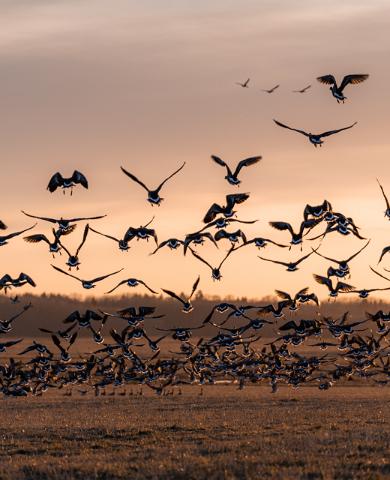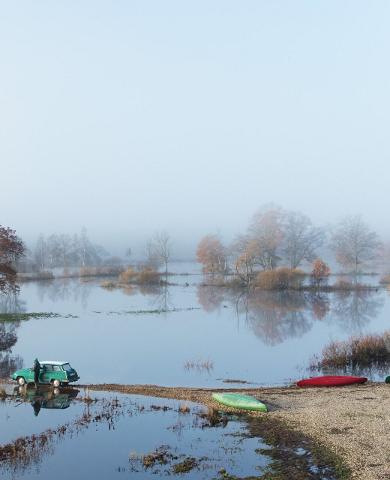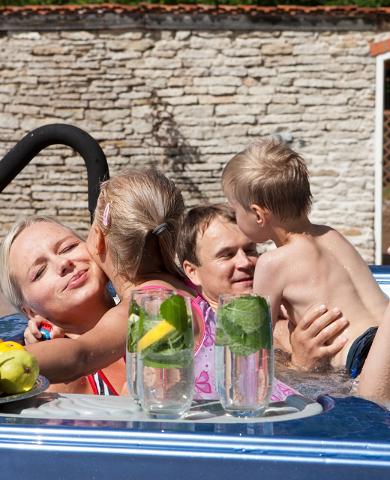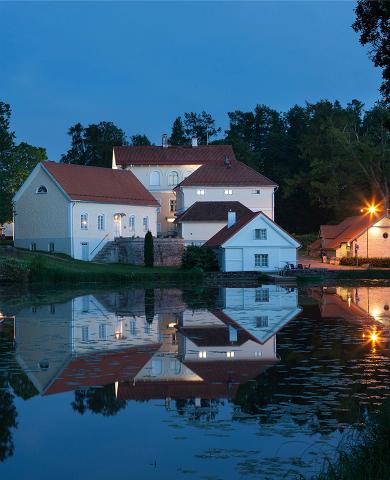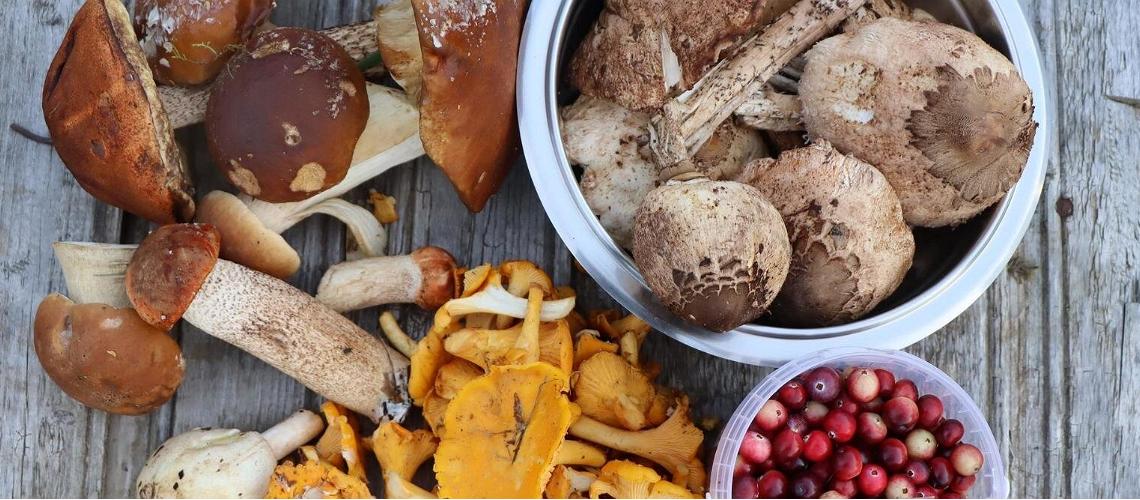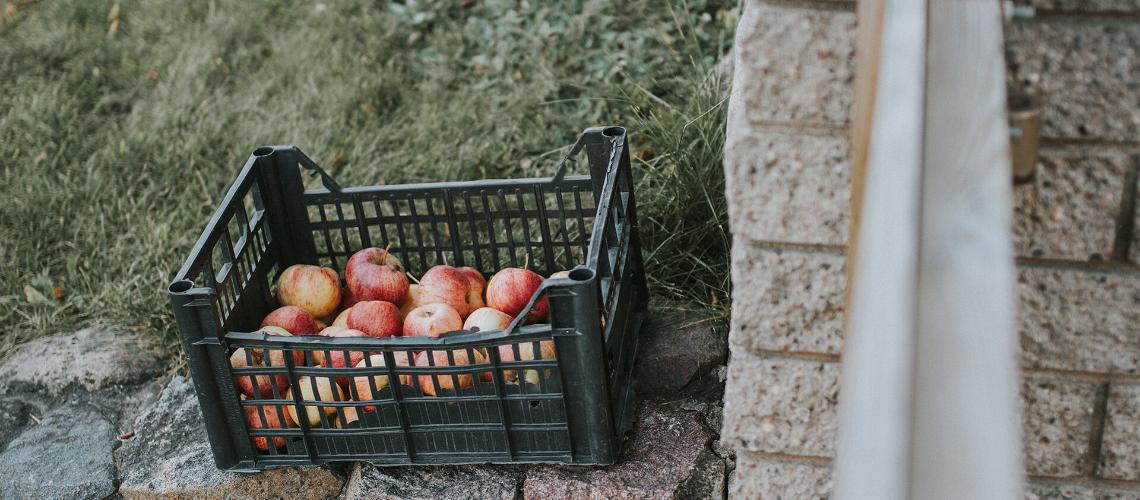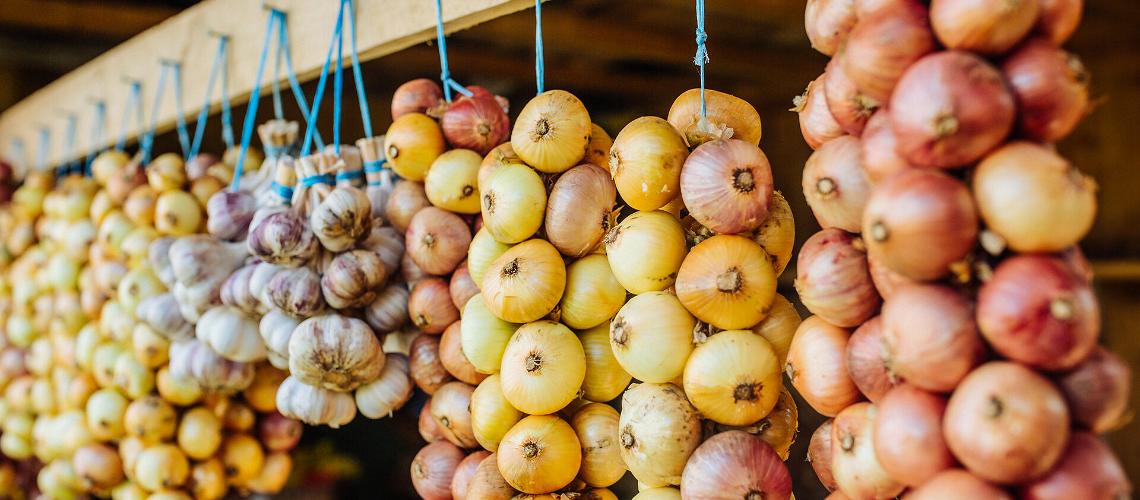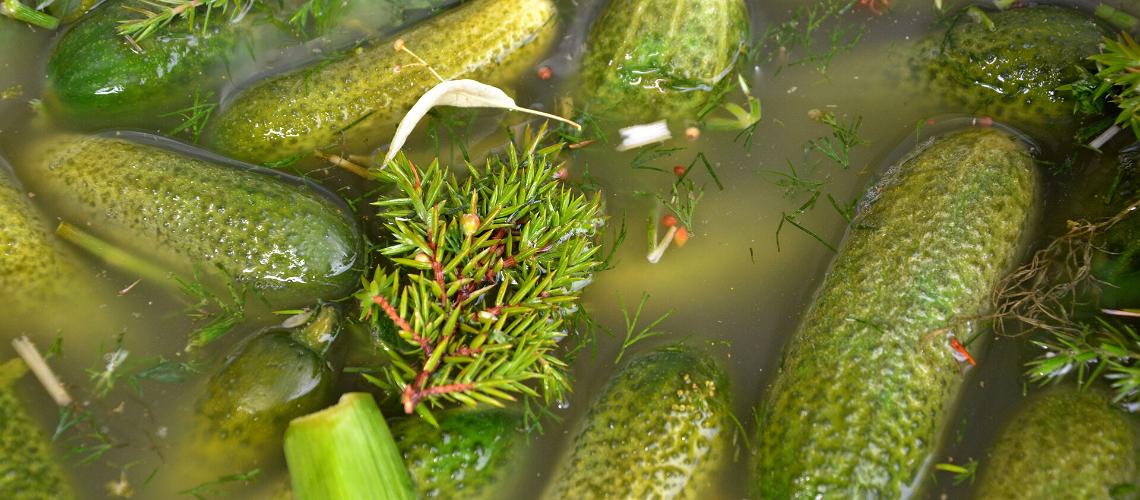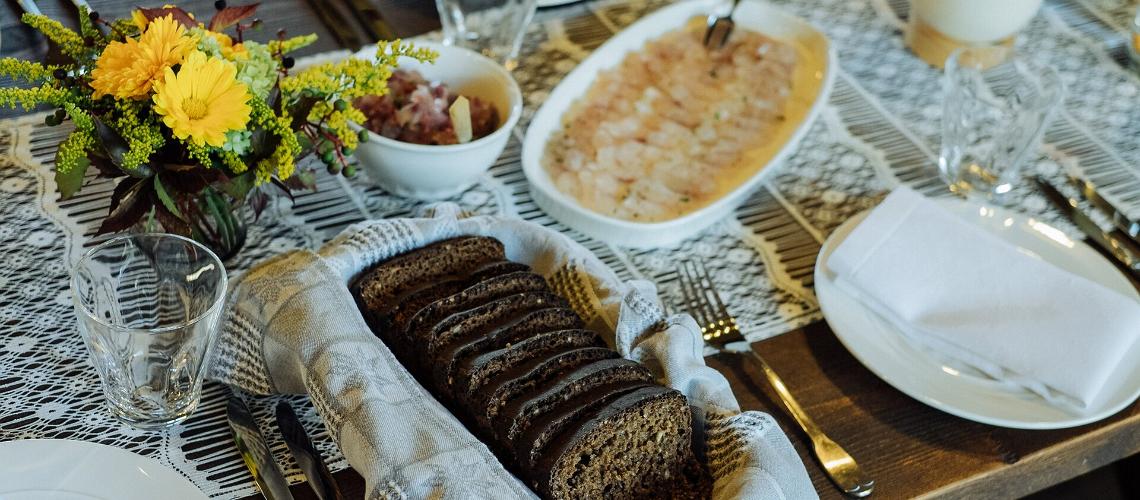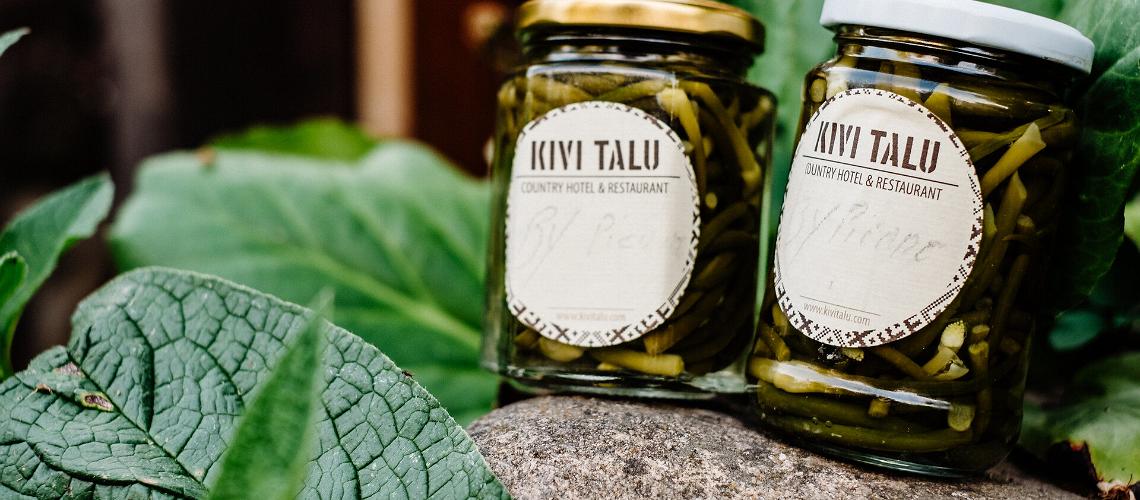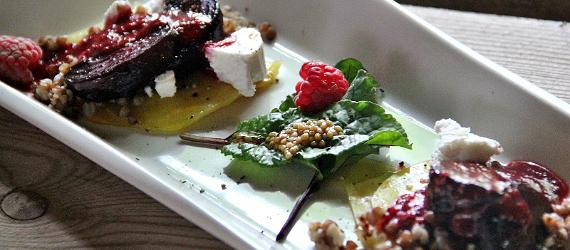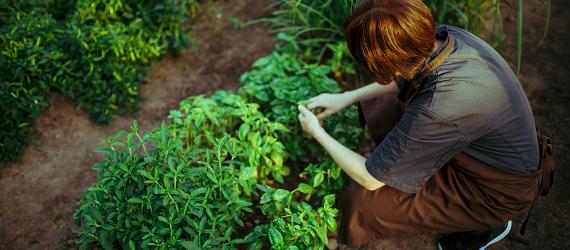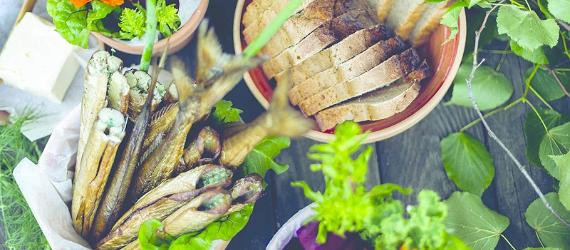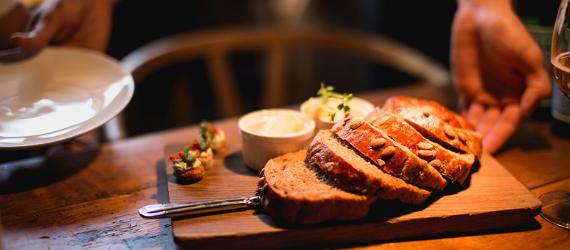Estonian cuisine is closely tied to the country's four distinct seasons. Autumn is a great time to visit if you want to try forest-, farm-, or field-to-table dining. If you can't make it during this colorful season, you're not out of luck. Many foods harvested in the fall are smoked, pickled, or preserved so they can be enjoyed year-round.
Autumn's ingredients
Estonian cuisine uses a collection of fresh, local ingredients. Staples like rye bread, cheese, and herring complement seasonal products. In autumn, Estonians head to the forest to forage for mushrooms; wild game, such as elk, appears on tables; apples are plucked from orchards, and root vegetables are unearthed. What cannot be served fresh is preserved and enjoyed throughout the winter thanks to methods like salting or marinating. Preservation techniques that were once a necessity before the popularization of refrigeration in the 1930s remain popular even today.
Estonians head to the forests to pick mushrooms in late summer and autumn. If you want to try picking mushrooms for yourself, it may be best to hire a guide; locals would rather give you their smartphone passcode than tell you the location of their favorite mushroom spot! Chanterelles are a local delicacy as are pickled boletus mushrooms.
Apples are plentiful in fall all around Estonia. Try fresh-pressed apple juice or a tasty apple kohupiim tart. Sometimes locals wind up with more apples than they can use, so they set out boxes of them for their neighbors to take home and enjoy.
Estonians don't carve pumpkins in October; they pickle them instead! Pickled pumpkin is an essential part of the traditional Estonian Christmas meal. The acidity helps cut through the richness of roast pork and potatoes.
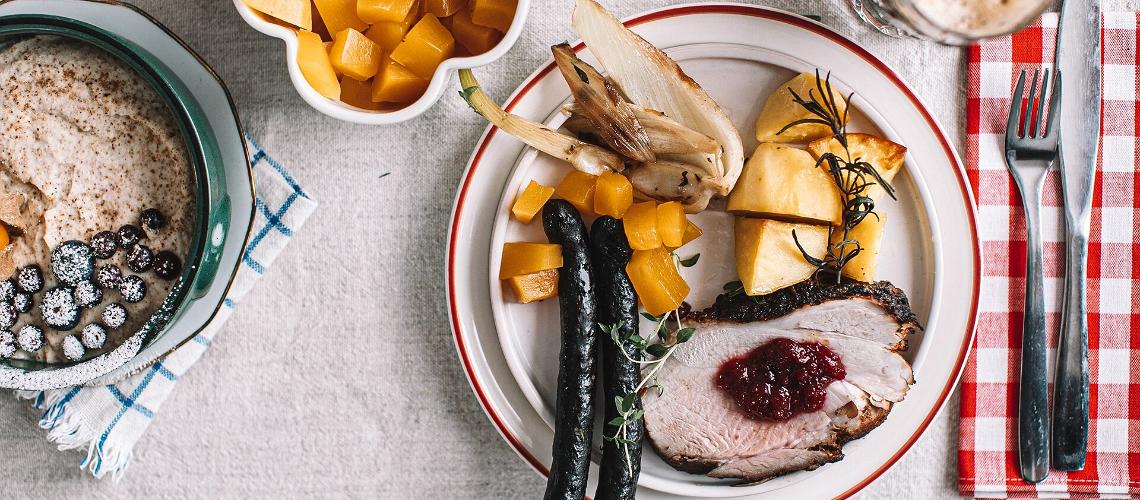
Autumn's preserves, winter's treats
Pickled pumpkins and cranberry jam, two autumn preserves, add some color to the table during Estonian Christmas celebrations.
Photo by: Kairi TäheRestaurants serving up Estonian fare
Estonian chefs make the most of these seasonal ingredients, which is one of the reasons why MICHELIN inspectors chose Estonia to be the first Baltic country to be represented in their world-renowned guide.
In the heart of Tallinn's Old Town, Restaurant MEKK and Restaurant Farm serve contemporary interpretations of Estonian cuisine. At Ööbiku Gastronomy Farm Restaurant, a short drive from Tallinn, enjoy a five-course meal of local ingredients and forest products. On the island of Muhu, you'll find innovative Nordic Island Cuisine at Alexander, the restaurant of Pädaste Manor. As one of the top restaurants in Estonia according to White Guide Nordic, Alexander focuses on fresh local ingredients by working with the island's producers and farmers and growing many of the greens and herbs in Pädaste's own gardens and greenhouses.
Of course, there are plenty of places all around the country serving authentic Estonian food. If you happen to be in Tallinn in mid-September, then you can also try rustic rural cooking at the Open Air Museum's Day of Estonian Bread and Autumn Fair. You can also visit their on-site Tavern, Kolu Inn, any time of year for a taste of classic Estonian dishes.
Try making an Estonian superfood sorbet
Beetroot, the earthy, purple vegetable, is an important vegetable in Estonia. One of the many "superfoods" found in Estonia, it's packed with immune- and metabolism-boosting nutrients, making it a perfect ingredient for the autumn season. Though typically served in soups and salads, try making this healthy frozen beet sorbet!
Instructions:
Heat 100 g honey in 150 g of water for five minutes. Puree 150 g of blackcurrants, 50 g of sea buckthorn berries, and 150 g of beet and combine with honey syrup. Run mixture through a sieve and cool in freezer. Once liquid begins to freeze, whip together with one egg white until foamy. Freeze for 12 hours and serve with frozen berries and raw buckwheat.




